
Understanding Aloes
The genus Aloe is arguably one of Africa’s most iconic and valued plant genera, prized by succulent plant collectors, horticulturalists, and pharmaceutical companies alike for years for its fleshy leaves and therapeutic medicinal properties.
But what makes Aloe-Aloe cultivars suddenly so appreciated and in demand is not their claimed medicinal properties (most recognized in “Vera”), not their water wise nature, and not their trendy architectural shapes but their spectacular flowers they deliver-All in the 40 year South African breeding program- larger, more prolific and for longer periods than pure aloe species.
In the same way that “old fashioned” poor flowering rose species are now longer grown because there are better flowering hybrids, so too have these Aloe-Aloe hybrid cultivars superseded species aloes and are now setting the benchmark for big easy to grow flowers in gardens across Australia
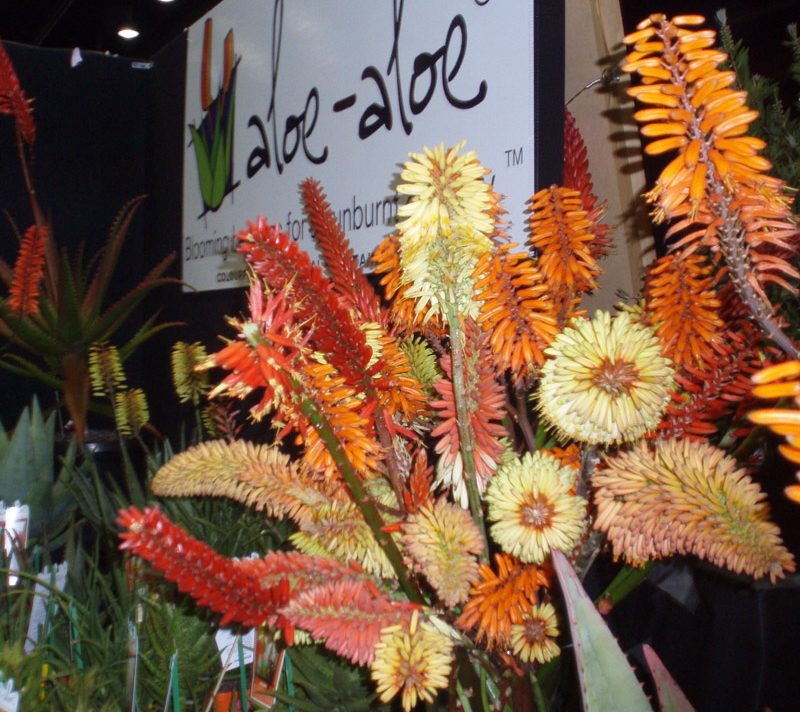
Adaptability to Garden Conditions
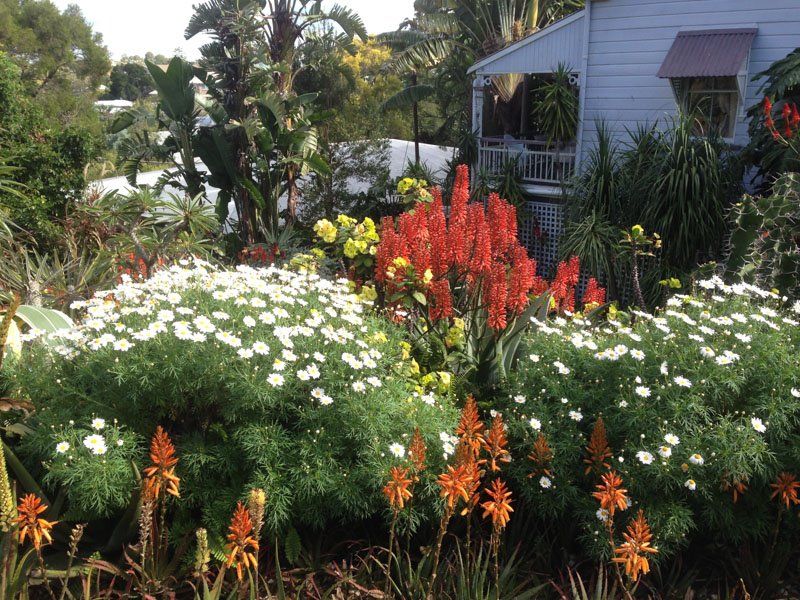
Different aloe species come from a range of habitats with vastly different climatic conditions which include the desert which is dry and tropical regions receiving a lot of rain.
Many of these pure aloe species will not survive in Australian gardens with climates that differ from their natural habitat.
Being hybrid of aloe species from different habitats, the Aloe-Aloe cultivars have a wider genetic background (some as many as 8 parent species) so they are usually able to cope better with a wider range of rainfall (including extended periods of significant rain) and climatic conditions (cold and hot) than their parent species, making them better candidates for the garden
WARNING: 'All Aloes Ain’t Aloe-Aloes!’
With the increased popularity of Aloe-Aloe’s, there is a proliferation of different aloe plants (pure species and new hybrids) becoming available across Australia (some branded and others not). This is great news for the sector of the market following the “succulent craze” collecting small plants for pot culture as there are some amazingly beautiful textural and coloured leaf forms now appearing. Some of these, referred to as "fantasy aloes" contain striking jaggard teeth and leaves containing red,orange and yellow markings.
However, being the only dedicated aloe specialists in Australia, we constantly receive complaints from gardeners across the country on aloe species and other new aloe cultivars that are not Aloe-Aloes, such as “mine has never flowered” or “mine died when we received a lot of rain”.
It is important to understand that whilst certain pure aloe species are capable of being used in landscaping, they are usually less desirable than Aloe-Aloe hybrids, as the species are adapted survive in a specific habitat conditions that is generally difficult to simulate in a garden in Australia.
Whilst species aloes and these fantasy hybrids are great for collecting in pots, usually they have insignificant flowers and more often than not, are unreliable in–ground as garden plants in our harsh Australian climate.
Just because it is a hybrid does not make it a good plant as in the process of hybridization the offspring comprises many different plant attributes, most of which is genetically inferior- this is referred to as “hybrid junk”, a lot of which is now appearing on the market. It is only through careful selection of clones with "hybrid vigour" over many years and the vegetative propagation thereof that these superior qualities can be assured
Aloe-Aloe’s have been bred and selected over 40 years for a range of specific criteria to ensure that they are reliable garden plants and are long and spectacular bloomers. Failing to meet one of these criteria would render the hybrid unsuitable and it would be destroyed. Every plant carrying the Aloe-Aloe label gives you the great advantages that cloned hybrid vigor offers over ordinary seed grown aloes- that we can guarantee.
40 different unique cultivars
There are currently 40 different cultivars in the Aloe-Aloe collection.
Plant sizes include small (some groundcovers), medium (some shrubs), large and extra large (some trees) in the Aloe-Aloe collection.
Flower colours comprise orange, pink, red, white, yellow and also many bicolours in the Aloe-Aloe collection.
Aloe-Aloe cultivars all have different flowering times, but the majority of larger cultivars flower in autumn and winter in the Aloe-Aloe collection.
Whilst some do not have a fixed flowering season, generally they will always flower in the same season relative to their location. Flowering in the south of Australia is generally later than that of the northern parts. By carefully selecting aloe cultivars, your garden can have an aloe in bloom every month of the year.

Other uses and benefits
Cut flowers
Being prolific flower producers Aloe-Aloe’s will reward you with spectacular displays in a vase
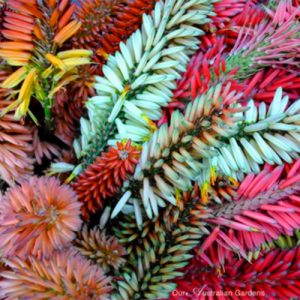
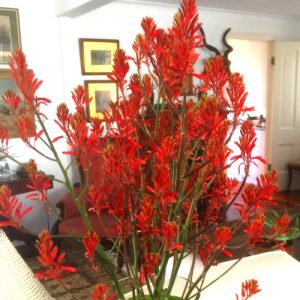
Bare Rooting
Because food is stored in the fleshy leaves they can be dug up, have the soil shaken off and then sit around decorating homes being quite happy for many months (up to12) and they can then be planted out in the garden – for this reason they are increasingly being sold in this way, with no risk of moving nasties in the soil.
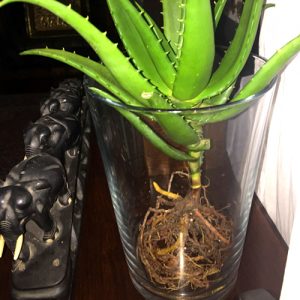

Fire Resistance
In climates where there is a risk of wildfires aloes can be planted as a barrier to protect homes due to it being fire retardant and not burning

Roof gardens & Green walls
Aloe-Aloes a popular choice for the green roof and wall industry because of their flower performance, their ability to grow in shallow medium and their easy to care for and low water use qualities.


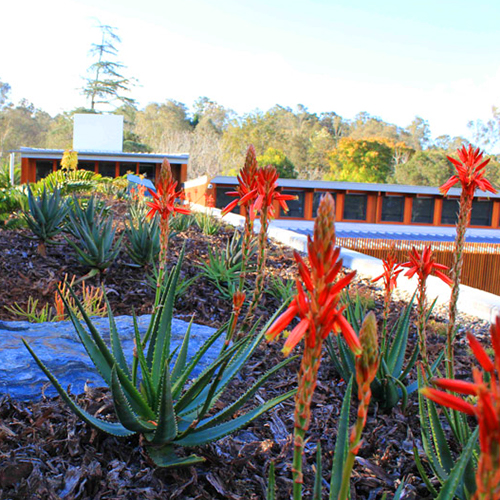
Coastal Gardening
Aloe-Aloes are very tolerant of sea spray and wind. In habitat there are even aloes growing on sand dunes meters from the sea
Wildlife Benefits
Because most aloe flowering is in autumn and winter when there is little else in flower, aloes are great plants to encourage wildlife to the garden. Bees (Australian native and European honey bees) feed from the nectar constantly and for honey farmers, honey production is significant in winter. The aloes provide nectar and pollen continuously for nectar feeding birds during the day to keep them interested. During the day as they drink nectar, they continuously pollinate the Aloe-Aloe’s. Butterflies and other insects are also attracted to the garden by the nectar, which in turn also attracts insect feeding birds. By planting Aloe-Aloe’s we can provide a habitat for a range of creatures around us, and thereby contribute to the biodiversity of our environment as a whole.



